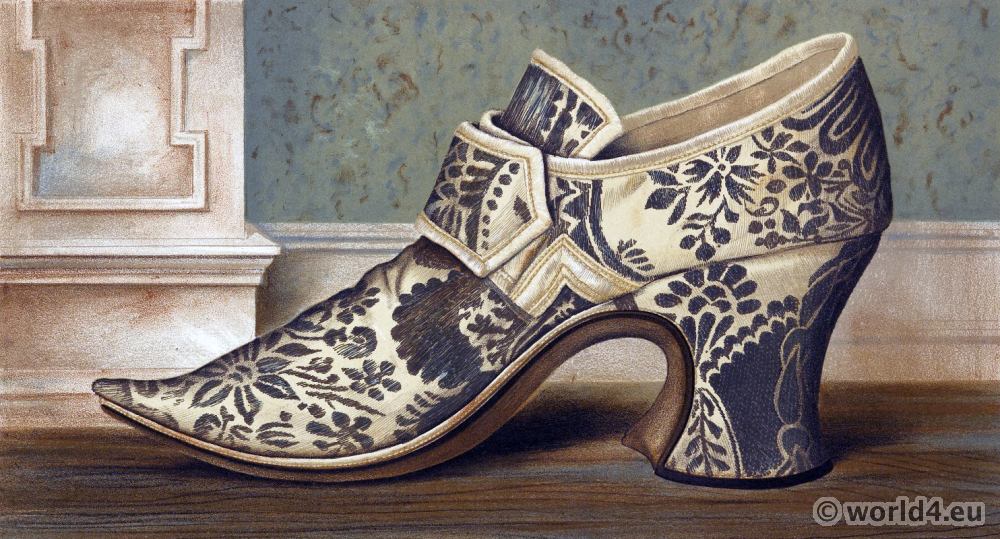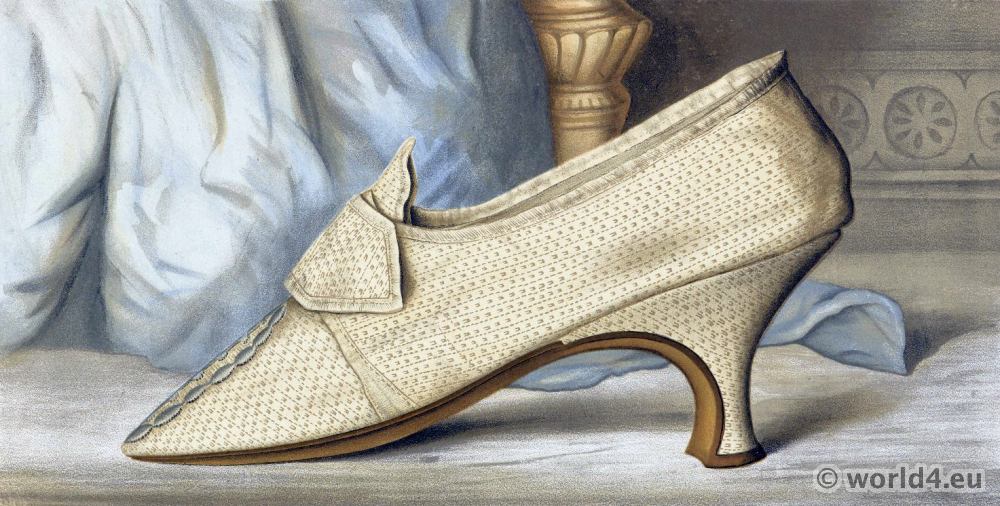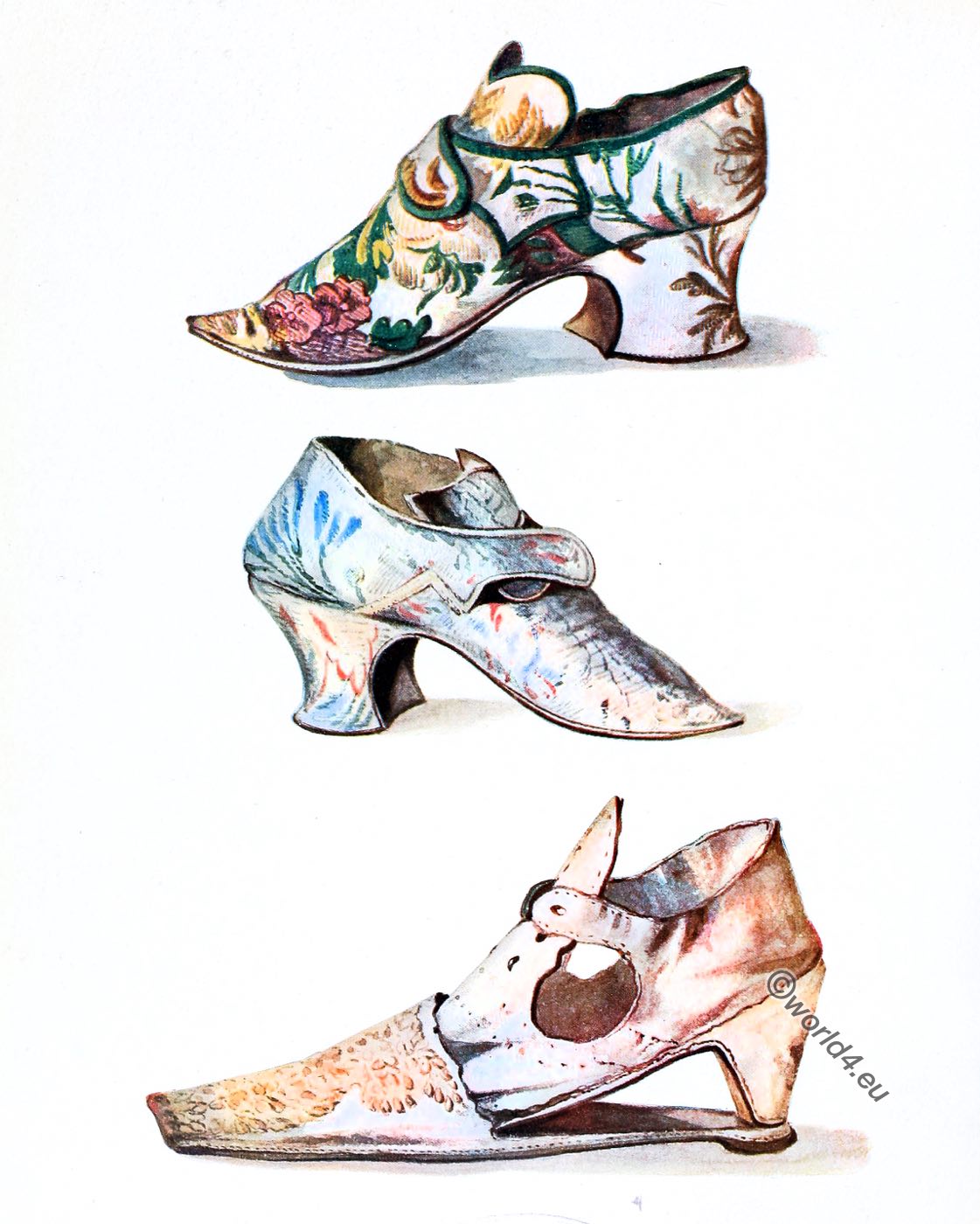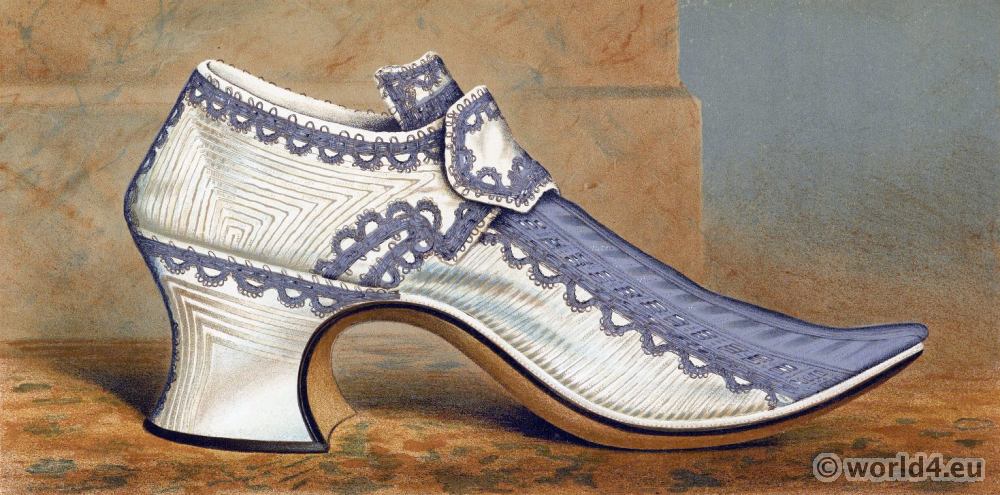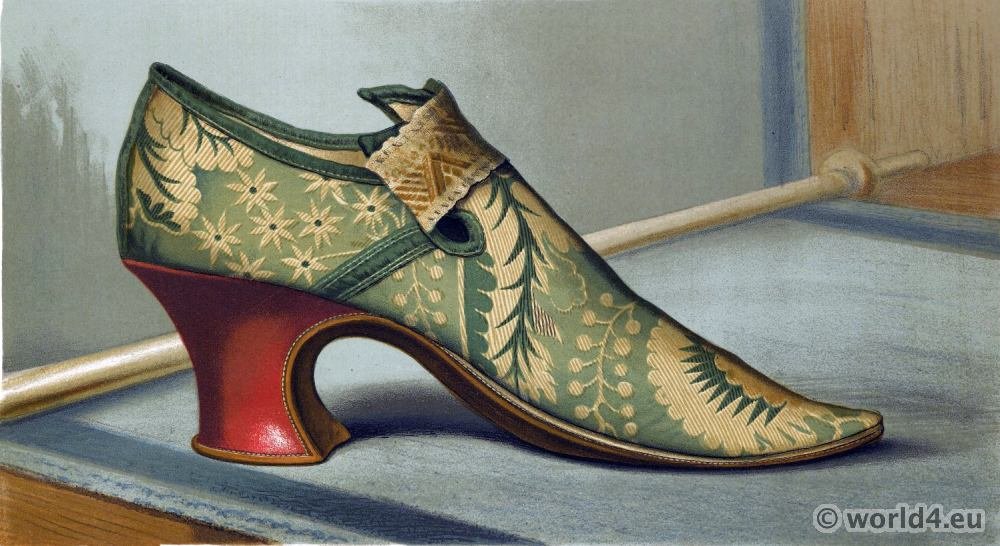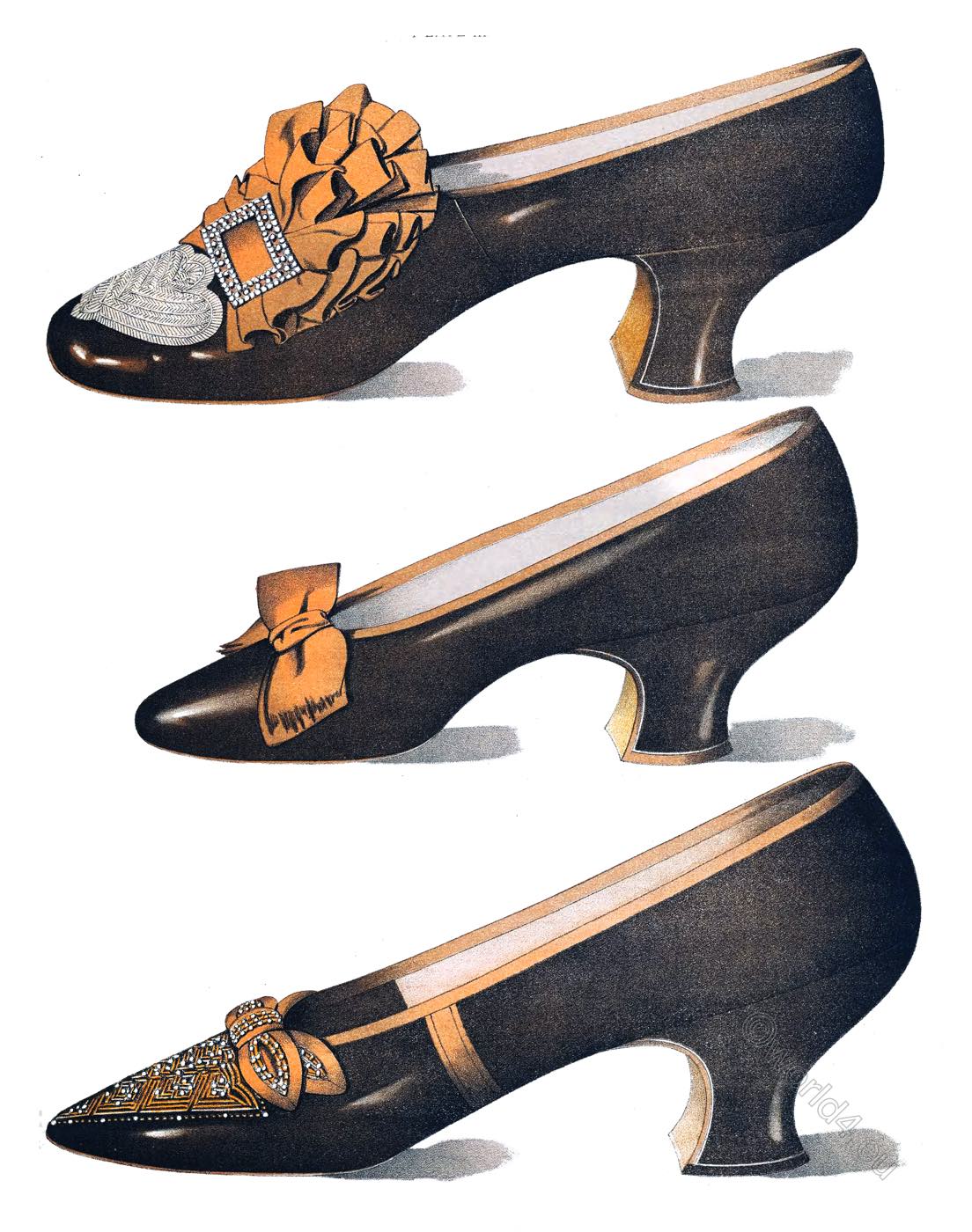
BRONZE stage shoe worn by the well-known actress Miss Ada Cavendish *). Louis heel, somewhat square toe, embroidered finely with steel, and large brown satin-pleated bow with steel buckle.
*) Ada Cavendish (1839 –1895), known for her Shakespearean roles (Juliet, Beatrice and Rosalind) and for popularizing Wilkie Collins’ acting in America, Ada Cavendish made her theatre debut in 1863 in musical parodies of FC Burnand and others.
Bronze shoe No. 2 is one of the smallest in the collection, and belonged to Miss Marsh. It has a pointed toe, Louis heel, and plain little bow of brown satin ribbon.
The third shoe, also in bronze, has very pointed toe, with pearl and gold embroidery, which also adorns the small bow, leaf-like in form. The side seam is stitched with silk galloon, similar to what binds the outside edge. The heel is Louis in style.
Source: Ladies’ Dress Shoes of the Nineteenth Century by T. Watson Greig of Glencarse. Edinburgh: David Douglas 1900.
Related
Discover more from World4 Costume Culture History
Subscribe to get the latest posts sent to your email.

